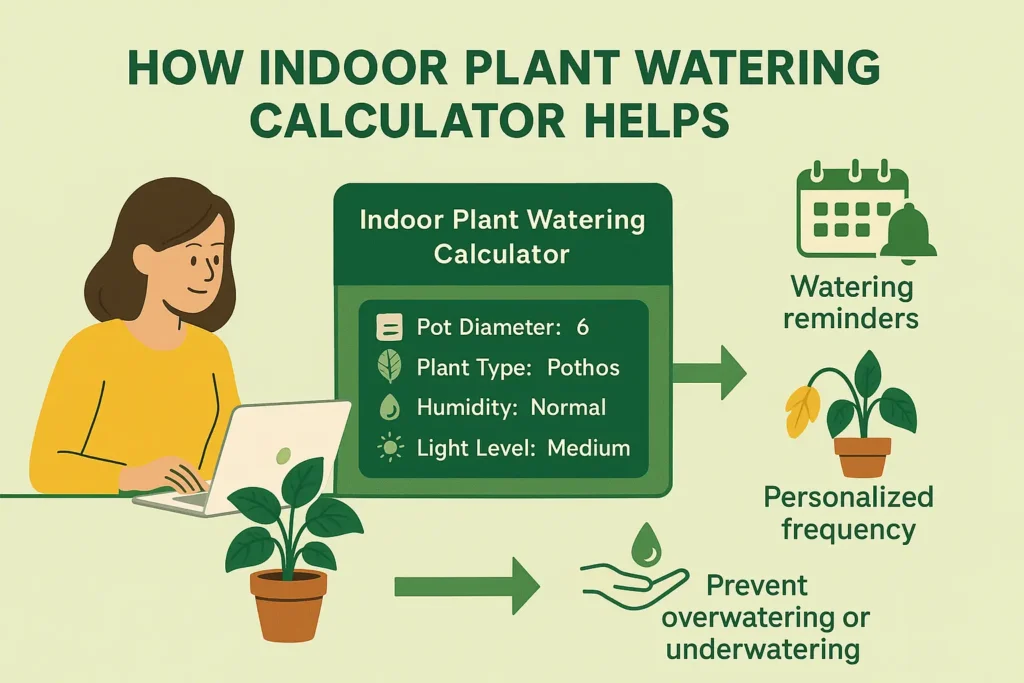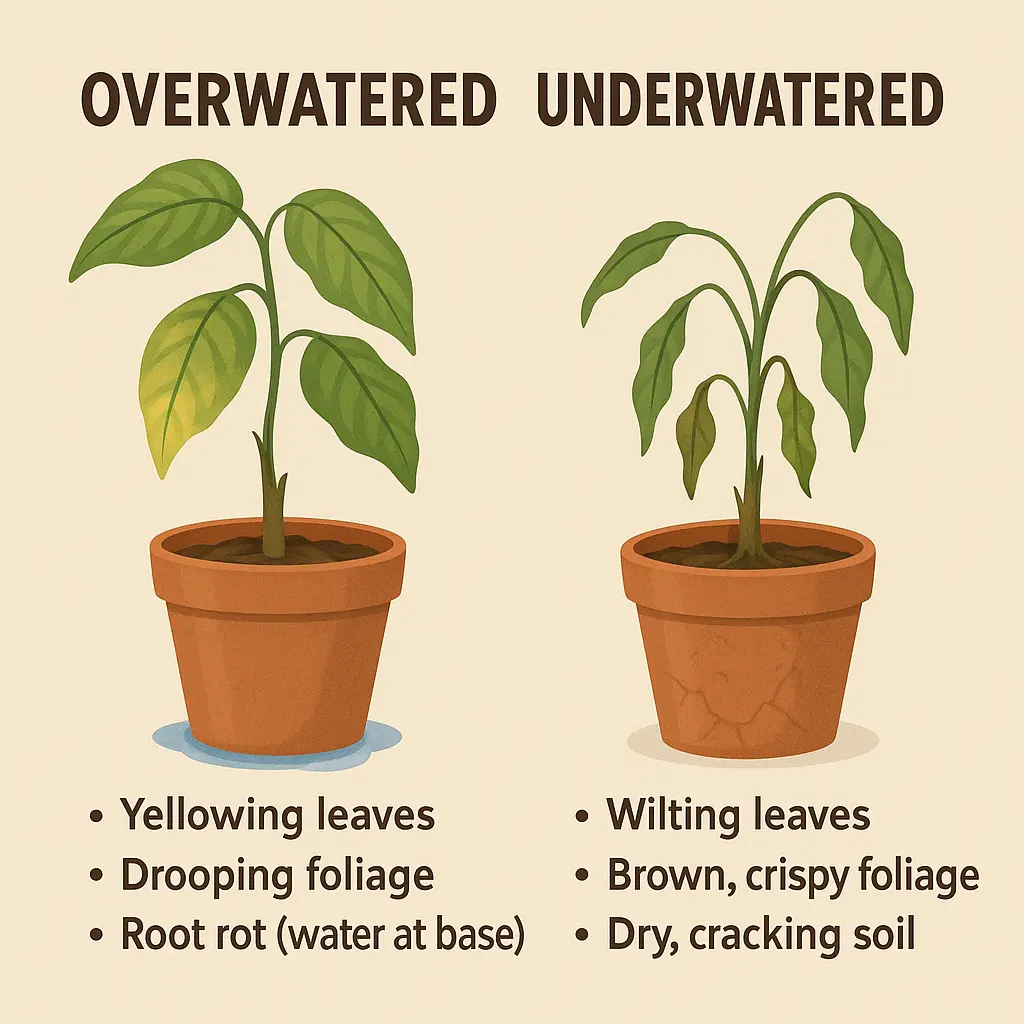Indoor Plant Watering Calculator
Pot Details
Plant Type
Environment
Disclaimer: This calculator is approximate. Always observe soil moisture and adjust accordingly.

Created by James S. Lockwood
With a background in botany and ecological sciences, James specializes in creating practical tools and resources to help gardeners, farmers, and plant enthusiasts optimize their green spaces.
Do you wonder if you’re overwatering or underwatering your beloved houseplants? Our Indoor Plant Watering Calculator is here to help—an easy-to-use tool that gives you an approximate watering schedule based on factors like pot size, plant type, and room conditions.
Table of Contents

Why Use Indoor Plant Watering Calculator?
Prevents Over- or Underwatering
Watering too often can lead to root rot and fungus gnats, while watering too little leaves your plant dehydrated and drooping. This calculator aims to strike the right balance based on best-practice estimates.
Considers Multiple Factors
Pot Size & Material: A larger pot or clay/terracotta pot changes how quickly moisture evaporates.
Plant Type: Succulents have different needs than tropical ferns.
Temperature & Humidity: Warmer, drier rooms cause faster evaporation, so you may need to water more frequently.
Tailored Recommendations
After inputting your specific data, the tool calculates how much water (in milliliters or fluid ounces) you might use each watering, plus how many days between each watering session.
How Indoor Plant Watering Calculator Works?
Pot Volume
We estimate the pot’s volume (assuming a cylindrical shape) to help gauge how much soil—and thus how much water—is needed to reach the root zone.
Water Fraction
Instead of saturating the entire pot volume with water, the calculator suggests a fraction (e.g., ~25% for an average houseplant). This fraction varies if the plant is a succulent (less water) or tropical (more water), and also accounts for clay pots (which lose moisture faster).
Watering Frequency
We start with a baseline interval (about 7 days) and adjust it depending on plant type, pot material, temperature, and humidity. If your plant is a succulent in a cold, humid climate, your interval might be quite long. If you have a thirsty fern in a hot, dry room, you’ll likely water more often.
How Much You Should Water Houseplants?

Watering houseplants correctly is essential for their health and growth. However, the amount of water a plant needs depends on several factors, including the plant type, pot size, humidity levels, and light exposure. Overwatering and underwatering are common mistakes that can lead to root rot, yellowing leaves, or stunted growth.
Instead of guessing, use our Indoor Plant Watering Calculator to get a personalized watering recommendation for your plants. This tool takes into account important factors such as pot size, plant species, and environmental conditions to help you determine how much and how often to water your houseplants.
Since different plants have different moisture needs, it’s always best to check the soil before watering. For most houseplants, the top inch of soil should be dry before adding water. Succulents and cacti need less frequent watering, while tropical plants may require consistent moisture.
Let our Indoor Plant Watering Calculator simplify your plant care routine and take the guesswork out of watering! 🌿💧
Helpful Tips
Check Soil Moisture
This calculator is an approximation. Always poke your finger an inch into the soil or use a moisture meter to confirm if it’s time to water.
Watch for Symptoms
If leaves yellow and soil stays soggy, reduce frequency. If the plant wilts and soil is bone-dry, increase watering.
Every Plant is Unique
Lighting, airflow, soil type, and plant genetics can all alter real-world needs—so use this tool as a guide, not a strict rule.
Disclaimer
While we strive to give you a solid starting point, remember that no automated calculator can account for every environmental variation. Always observe your plant’s health and adjust watering schedules accordingly.
